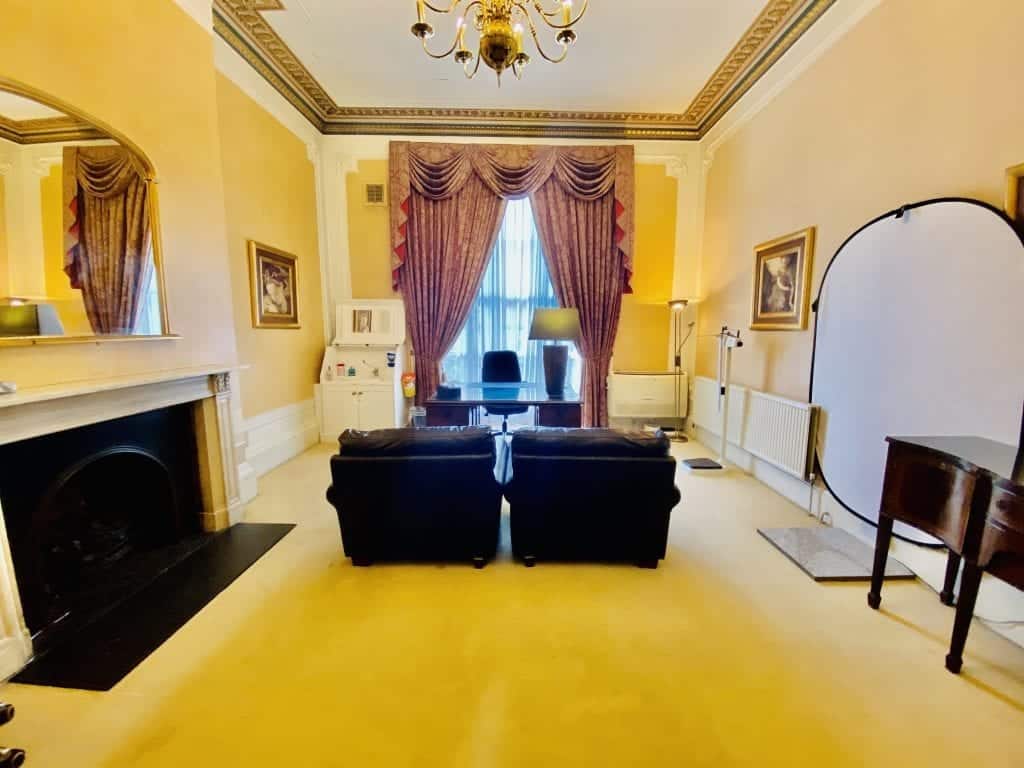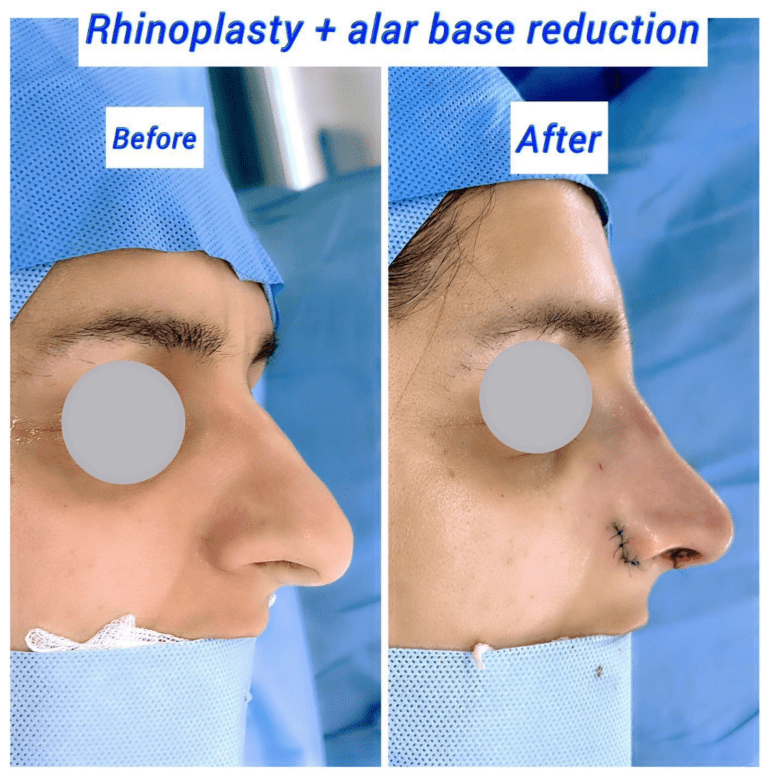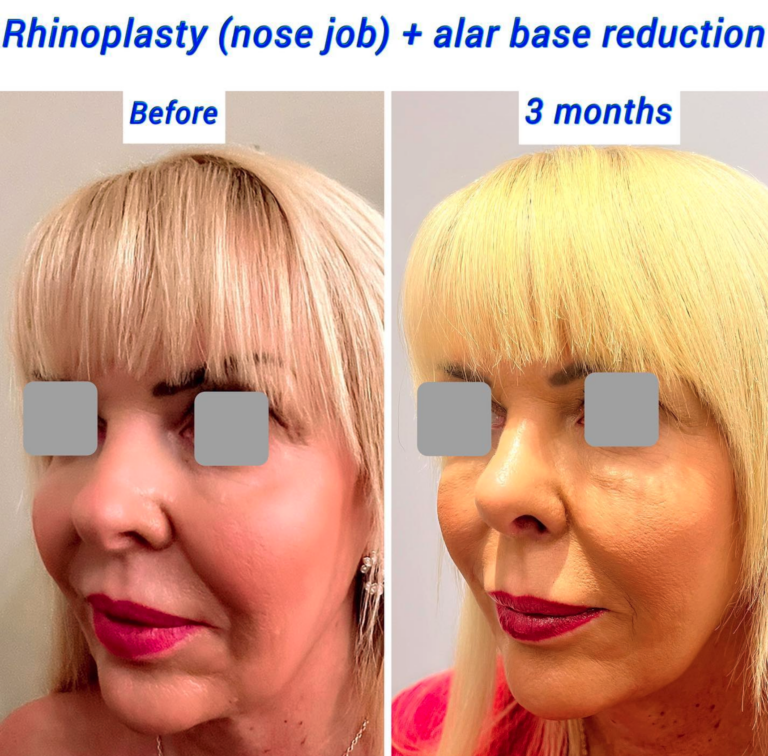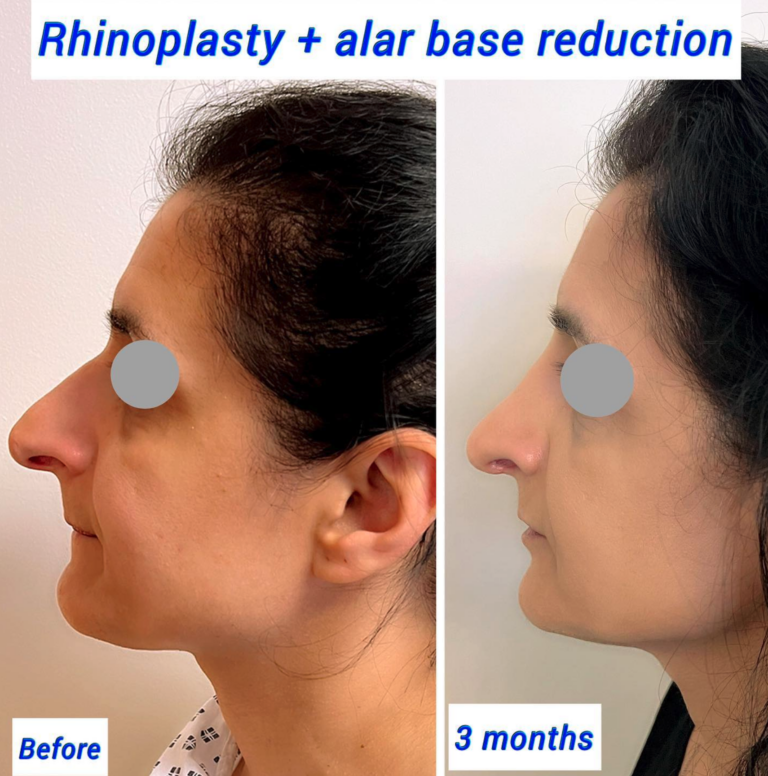The nose is central to the look and balance of the face. A lot of people are unhappy with the shape or size of the nose. This really affects their confidence and how they feel. To restore balance and feel good about your appearance, many people opt for rhinoplasty surgery. With back to back video chats and social media, people are much more aware of their looks. Although it’s a common type of plastic surgery, it’s normal to have a ton of questions to ask about the procedure and what to expect.
Rhinoplasty or a nose job is a common procedure that can fix a range of aesthetic and functional issues. It can help to improve shape and size as well as the overall balance of your face. When it comes to rhinoplasty, the recovery process is a journey. You need to allow yourself time to recover and heal so you can see the best results. Rhinoplasty surgery involves planning some downtime and being ready for the recovery process.
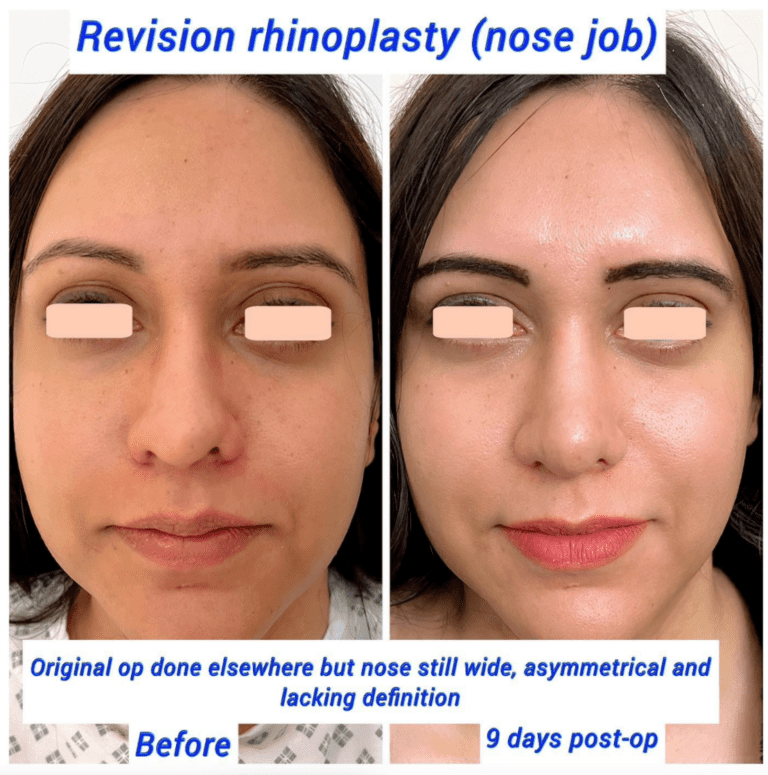
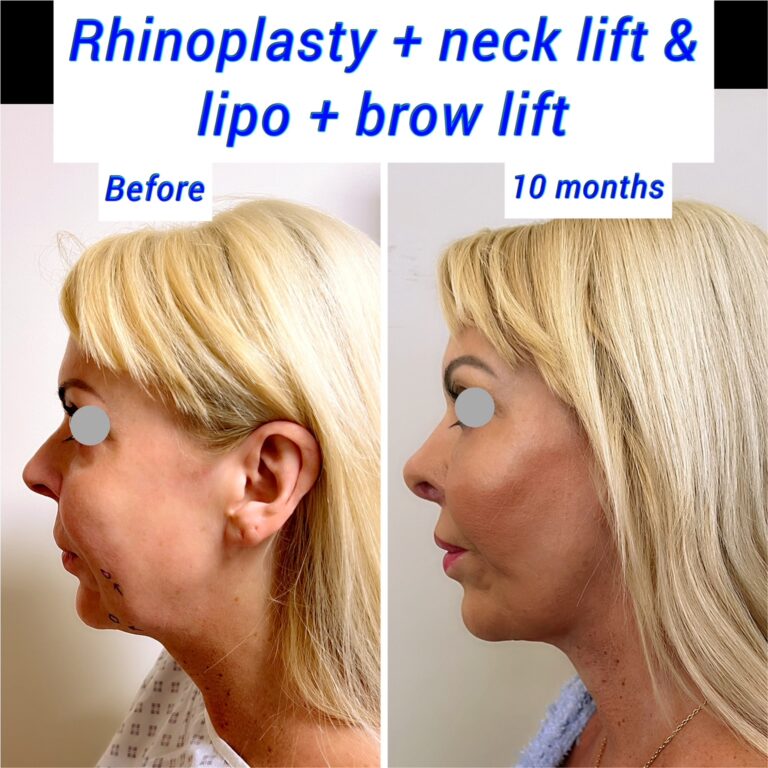
Rhinoplasty: Quick Overview
- Surgery Time: 1-3 hours
- Anaesthetic: General
- Hospital Stay: Day case
- Dressing and Garments: Bandages up to 1 week
- Time Off Work: 2 weeks
- Exercise: 6 Weeks
- Mobile: 48 hours
- Washing: Shower after 1 day keeping nose fully dry
- Sleeping Position: On back for 4 weeks
- Full Recovery: 6-8 weeks
What is Rhinoplasty?
Rhinoplasty is also known as a nose job. It’s a surgery of the nose that can correct and fix several issues. Whether it’s a wide nose, a bump, overall shape, or size, rhinoplasty can improve and create balance in the face. In addition to boosting self-esteem and making you feel more confident, rhinoplasty can also help alleviate breathing problems.
What Happens During Rhinoplasty Surgery?
There are several types of rhinoplasty surgery. The best procedure for you depends on the results you’re looking to achieve. Your plastic surgeon will discuss this with you and choose the optimal route. Here are different type of procedures you can expect.
The best procedure for you depends on the results you’re looking to achieve. Your plastic surgeon will discuss this with you and choose the optimal route.
Open Rhinoplasty
The surgery is performed from outside the nose with a small incision on the columella (the tissue between the nostrils). Incisions are made inside the nostril and across the columella. This technique gives your surgeon complete access to the nose structure.
Closed Rhinoplasty
This type of surgery only involves incisions within the nostrils. Your surgeon will make very small cuts inside the nostrils. The scarring is hidden as it’s inside the nose, but there is more limited access to the nose.
Septorhinoplasty
Septorhinoplasty combines a septoplasty and rhinoplasty to fix a deviated septum and alter the shape of your nose. Your surgeon will make cuts to the lining inside your nose and lift it off the bone and cartilage. They may also remove some cartilage in the nose if needed and straighten the nose if it’s broken.
Rhinoplasty-Tip
In this type of rhinoplasty, you specifically target the nose tip. If your primary concern is with the tip, you may not need a full rhinoplasty surgery. Your surgeon can reshape and remove cartilage from your nose tip.
Nostril Alteration
This technique involves making very small incisions inside nostrils. It results in minimal scarring that’s barely visible and hidden in the nostrils.
What are the Benefits of Rhinoplasty?
The nose is essential to the balance and look of the face. When you feel like your nose is out of balance with the rest of your face, it can impact your self-esteem and overall appearance. Benefits of rhinoplasty surgery include:
- Nose is in proportion with the face
- Balance facial structure
- Corrects nose issues
- Reduce nasal tip
- Decrease nostril size
- Improve breathing
- Reduce bridge
- Reduce the size of the nose
- Change the shape of the nose
Who is a Good Candidate for Rhinoplasty?
A good candidate is healthy with no serious medical conditions. They are a non-smoker with realistic expectations. If you meet these criteria and have a bump you want to remove, want to straighten your nose, or improve the proportions of the face, you are a good candidate for rhinoplasty.
What Should I Do Before Rhinoplasty Surgery?
Before your rhinoplasty surgery, it’s essential to ask as many questions as you need to. This will put any worries at ease and help you really understand the whole process.
There will be a few things that your doctor will recommend to prepare for your surgery beforehand, including:
- Stop smoking at least two weeks before and after the surgery.
- Avoid anti-inflammatory medications like ibuprofen.
- Avoid sun damage the two weeks before your surgery,
- No eating or drinking up to six hours before.
How Long Does Rhinoplasty Surgery Take?
The surgery itself will take up to three hours but generally lasts around two hours. It will be under general anaesthetic. The time it takes will depend on the type of rhinoplasty you choose, the technique, and the results you’re looking to achieve.
How Long Does it take to Recover and Heal From Rhinoplasty?
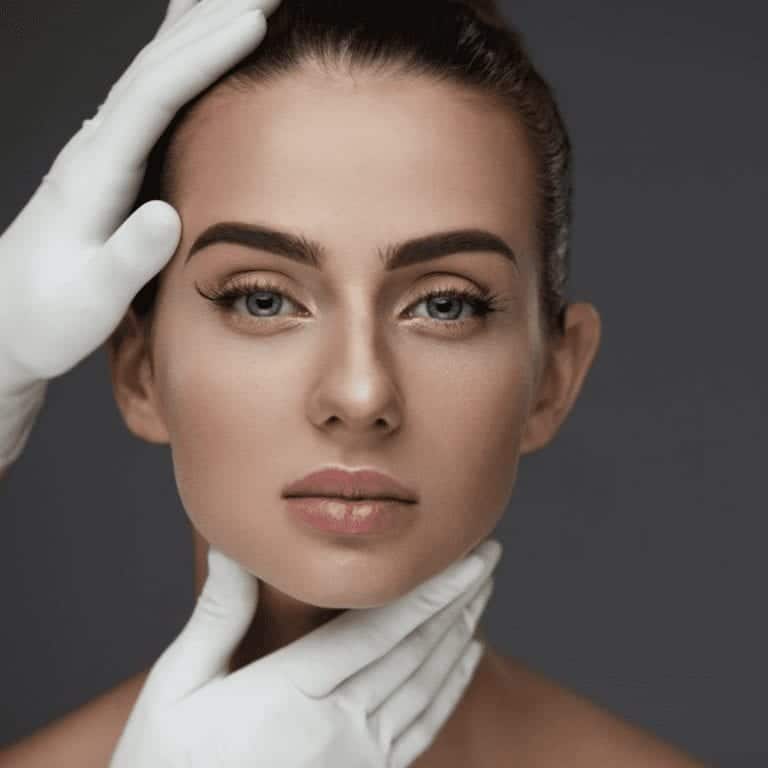
It’s a good idea to not assess your results in the first 14 days after your surgery. There will be swelling, and rest is absolutely crucial during this time. In the first 10 days, take time off work, rest, and give your body the chance to start healing.
In the first week, try to refrain from moving your face as much as possible. Use ice to reduce swelling, avoid water coming into contact with your nose, eat soft foods, and don’t blow your nose. Your doctor will advise you how to change your bandages at home. Wait for the all-clear by your surgeon and avoid wearing glasses for at least four weeks. Recovery takes up to six weeks with full results taking up to a year to fully heal and swelling to go down.
It’s essential to understand the recovery and healing process after rhinoplasty surgery. That way, you can pencil in enough downtime, take any time off work and prepare yourself for a more comfortable recovery journey.
One Week
After your procedure, your surgeon will place a nasal splint on or inside your nose. Your surgeon will remove this a week after your surgery. You will feel swelling, bruising, and discomfort after your surgery. This is entirely normal. You will feel congested because of the swelling and may have a little difficulty breathing through your nose.
In the first few days, stick to a soft food diet and sleep in an elevated head position. Many patients return to work after 6 or 7 days. Although you want to rest and recover, it’s important to get moving after your surgery. A light walk around the garden or hallway is perfectly suitable.
Two Weeks
In the second week after your surgery, the bruising and swelling are improving. You can resume normal daily activities and light exercise. The sutures will be coming out, and any nasal congestion should be gradually improving.
One Month
By this time, your nose has almost fully healed. You will continue to see improvement in the swelling. You should be able to return to exercises like jogging, swimming, and exercise. It’s a good idea to wait until 6 weeks post-op to start weight training.
Six Months
At six months post-op, you should be able to see the final result. There will be a significant improvement in swelling, and you can usually resume more heavy physical activity.
One Year
After one year, the healing process is complete, and you should be able to see your new nose. The swelling should be fully gone.
The initial recovery of rhinoplasty takes around 5 to 7 days. This is the time when you feel like it impacts your day-to-day life the most. Although the healing process takes up to one year, after three to four weeks, your face will look normal, and you will feel comfortable going about your everyday life.
Can Rhinoplasty Make Your Nose Smaller?
Yes, a rhinoplasty procedure can reduce the size of your nose. The procedure can change the shape and size of the whole nose.
Can Rhinoplasty Fix a Bent Nose?
Yes, to fix a crooked nose that’s either broken or asymmetrical, your surgeon will utilise various techniques to straighten the nose.
How Long Does it Take to See the Final Result?
It can take up to 18 months to see the final result of your rhinoplasty surgery. Each person is individual, so the time it takes to see the final result can vary.
Are the Results Permanent?
Yes, the results are permanent. But, it’s natural for your nose to somewhat change shape with age.
What Will Your Scars Be Like Following Rhinoplasty?
Most patients don’t tend to have any visible scarring. In some cases, you will have an external scar. But this is mainly following the correction of injuries and developmental abnormalities.
Can You Perform Rhinoplasty with Other Surgeries?
Yes, rhinoplasty is commonly performed alongside other surgeries, such as:
Is There an Alternative to Rhinoplasty Surgery?
Yes, an alternative to rhinoplasty is non-surgical rhinoplasty. This is a minimally invasive non-permanent alternative that uses dermal fillers to alter the appearance of the nose.
With non-surgical rhinoplasty, you don’t experience dramatic changes in your nose. Instead, it corrects specific concerns in a way that naturally compliments your nose. It’s becoming an increasingly popular procedure as an alternative to surgical rhinoplasty.
During the procedure, your practitioner will inject a series of dermal fillers. These are small injections made from hyaluronic acid. They are the same fillers that you would use for plumper lips, more defined cheeks, and preventing chin dimples. For non-surgical rhinoplasty, dermal fillers are applied to the soft tissue of the nose.
Dermal fillers can reshape the nose, but they can also treat several other issues. Many of our patients seek out non-surgical rhinoplasty to smooth out a bump in the nose or treat a ‘hooked nose’.
Before and After Rhinoplasty (Nose Job)
Nose Job | Rhinoplasty Patient Reviews at the Harley Clinic London
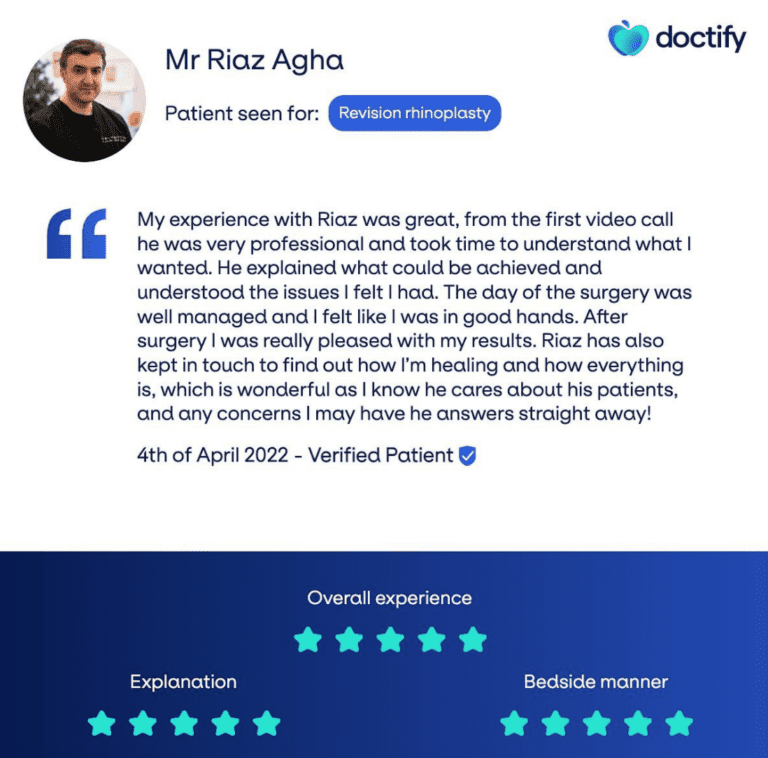
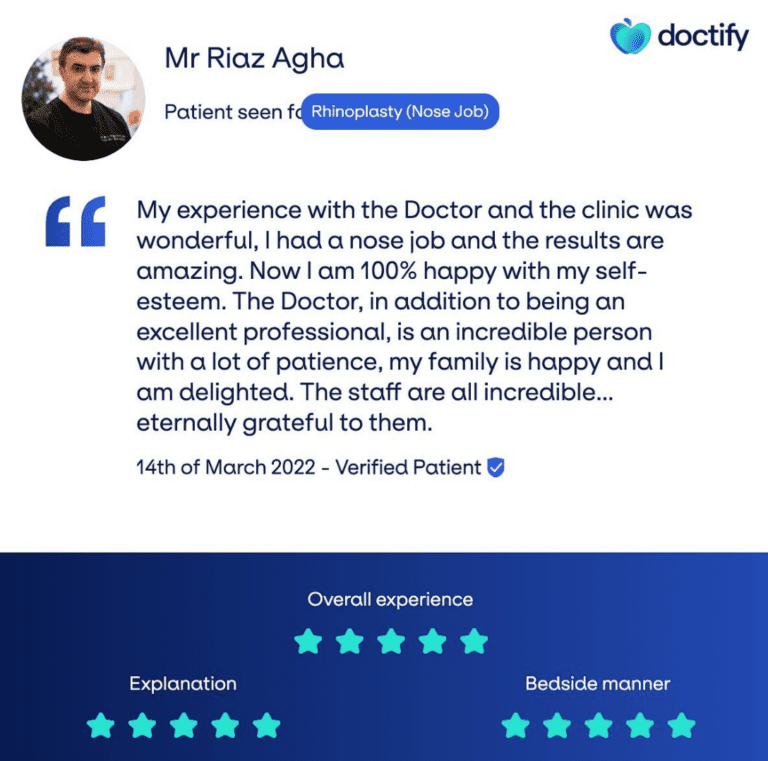
What are the Potential Risks and Complications of Rhinoplasty?
Like all surgeries, rhinoplasty has some potential risks, including:
- Bruising
- Airway issues
- Infection
- Temporary loss of smell and taste
- Inadequate straightening
- Nasal septal perforation
- Infection
- Bleeding
- Hematoma
- Anaesthesia risks
- Skin and or fat/necrosis
- Fluid accumulation
- Pain
- Swelling
- Poor wound healing
- Poor scarring
- Nerve injury
- Contour irregularity
- Seroma
- Over/under correction
- Asymmetry
- Damage to other structures
- DVT
- PE
- Chest infection
In general, the results of rhinoplasty surgery are permanent. As you age, your new nose will grow with you and naturally sit with the rest of your features. The decision to have a nose job is not something to take lightly. Make sure you do your research and choose an experienced plastic surgeon you trust.
To book a consultation today, please call 0203 582 4947 or email [email protected].
Further Rhinoplasty Reading:
- How Long Does it Take to Recover From Rhinoplasty?
- Rhinoplasty: What to Expect Before and After Surgery
- Surgical vs Non-Surgical Rhinoplasty
- What Do You Need to Avoid After Rhinoplasty?
- Rhinoplasty: 5 Tips for Selecting Your New Nose Shape
- How Can Wearing Glasses Impact Your Rhinoplasty Results?
- What is Revision Rhinoplasty?
- Nose Job Recovery: Rhinoplasty Swelling Stages
- Does Your Nose Keep Growing After Rhinoplasty Surgery?











